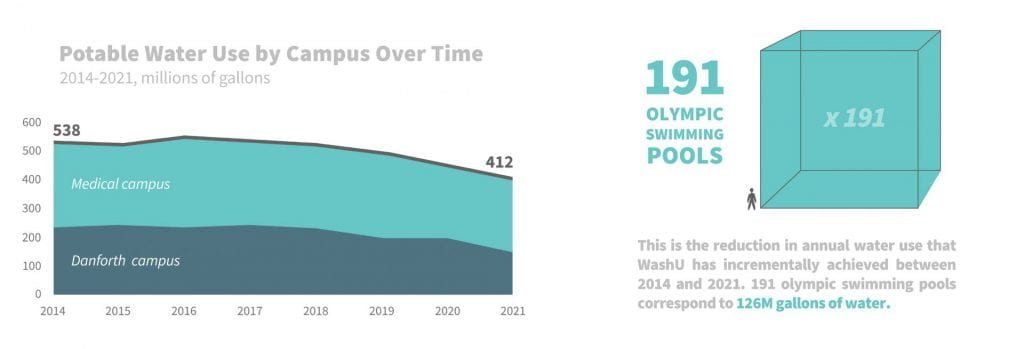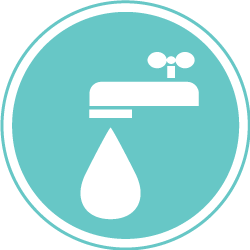
Washington University in St. Louis’ goal is to become a leader in water conservation.
2015 Strategic Plan for Sustainable Operations
Objectives & Progress
Potable Water Use | Achieved
In 2015, WashU committed to “decreasing campus potable water use 15% by 2020 relative to 2010 baseline.” As accurate data only became available in 2014, we are able to report water usage from 2014 to present. Potable water use decreased by over 23% between 2014 and 2021 across the Danforth and School of Medicine campuses.
It’s important to note that WashU’s water use reduction has taken place in spite of the growth in building square footage and campus population. Indeed, the rate at which we were able to reduce our water use intensity is even greater, allowing us to save over 16 gallons per square foot across the campuses.
This significant achievement is the result of intentional efforts to reduce potable water use for irrigation in campus landscapes, to install low flow fixtures, and to reduce water use in campus utility systems.
Flow Rate Best Practices
On our campuses, all new construction and major renovations projects are built with low-flow fixtures that reduce water use even beyond what the EPA recommends. For each building, the project team aims to find water fixtures with the lowest flow rates that simultaneously meet the building’s occupants needs.
Washington University has retrofitted many old domestic water fixtures throughout the university with low-flow fixtures, including shower heads, faucets and dual flush mechanisms. The most remarkable example is the residential showerhead retrofit that took place across WashU residences on- and off-campus in 2017, allowing between 8.8 and 13.6 million gallons of water saved every year, the equivalent of 25 Olympic swimming pools.
Washington University has been prioritizing ultra-low flow plumbing fixtures with the goal of minimizing indoor potable water use by at least 35% on recent projects. This focused effort has helped minimize potable water consumption in McKelvey Hall by 47.24%, and resulted in reduced water consumption of 46.5% in January Hall renovation.
Highlights
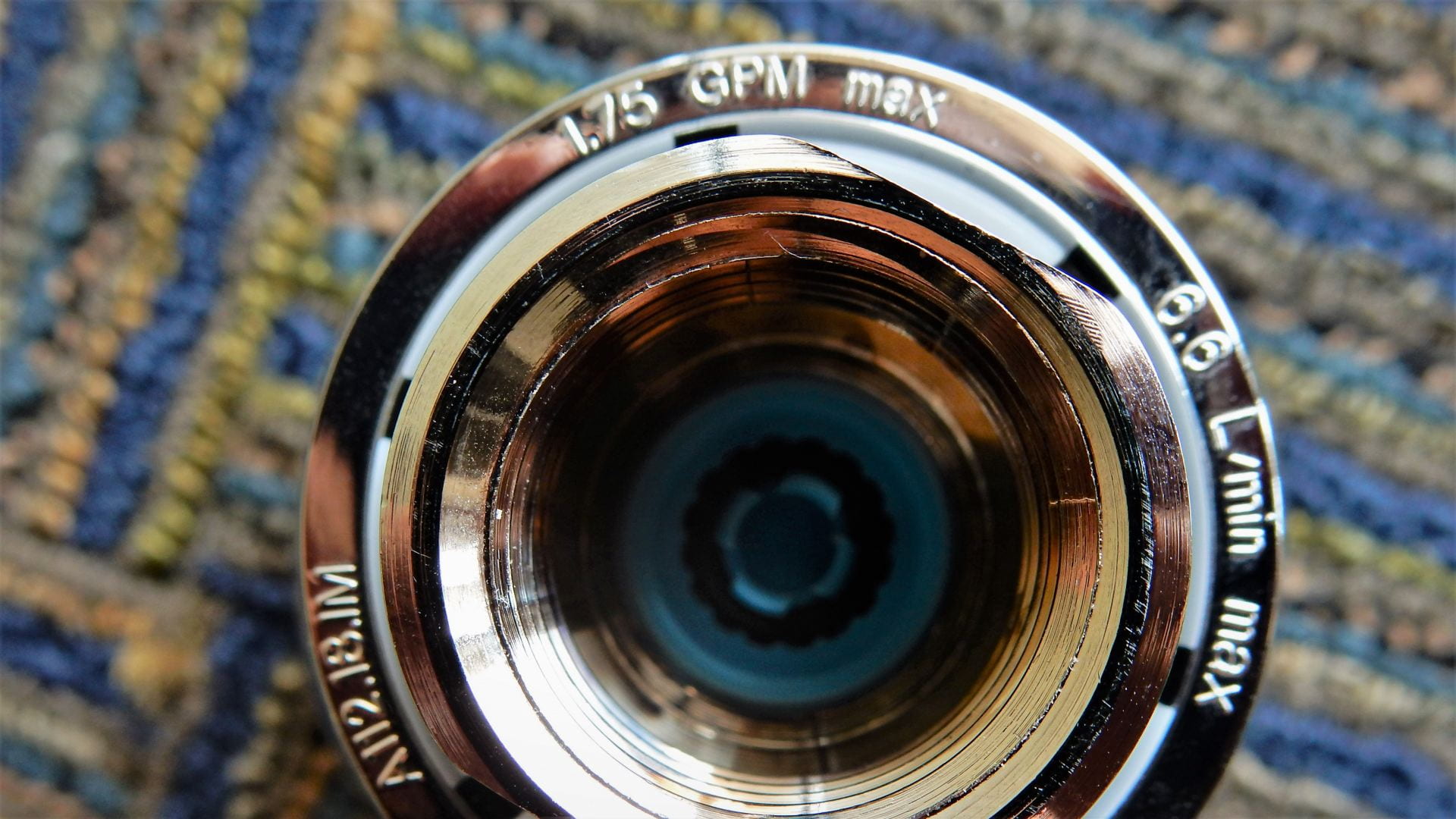
Low Flow Fixtures
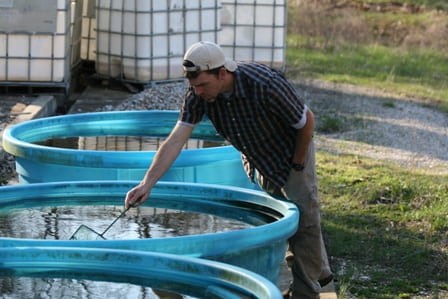
Irrigation

Heat-Recovery Chillers
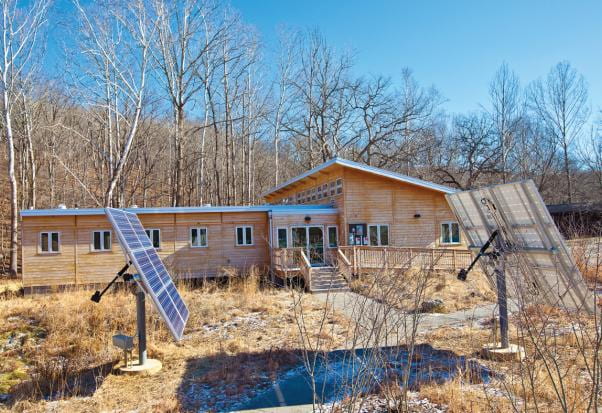
Water at Tyson
Water Partners
We would like to acknowledge and thank our campus partners who are instrumental in implementing and carrying forward the vision displayed on this page. The partners listed below have and continue to be committed to achieving the goals for alternative transportation on our campuses.
